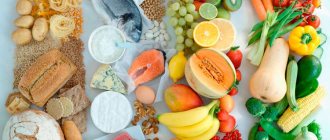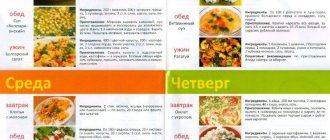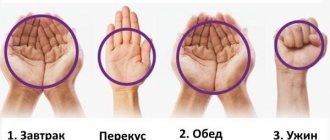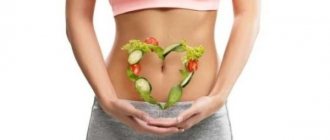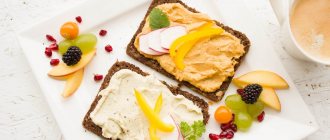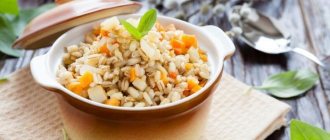Proteins, fats and carbohydrates. These three small, sonorous words are played on the tongue like a mantra by nutritionists around the world. From TV screens and laptop monitors, from the displays of smartphones and tablets, tons of information is poured onto us about which of these compounds we need to eat and which ones we don’t necessarily need to consume. The bottom line is that it is unwise to throw out one component from your diet, but reducing the quantitative share of one of them is quite possible.
One of the fashionable diets in the 21st century is low-carb. Why its name sounds exactly like this is not the mystery of the century. Of course, due to the low amount of carbohydrate-containing foods. Experts who have eaten hundreds of kilograms of salad on diets emphasize that this is not a diet at all, but real healthy nutrition. And if eating according to low-carbohydrate diet recipes becomes a habit for every individual who wants to lose weight, then the weight will miraculously stabilize, and discomfort in the gastrointestinal tract and psychologically will disappear.
The essence and benefits of a low-carb diet
The essence of a low-carb diet is weight loss due to a strict reduction in carbohydrate intake.
Reducing carbohydrates in the diet significantly slows down the leaching of the hormone insulin into the blood. Insulin is responsible for increasing the production of adipose tissue, especially if its levels constantly increase.
Allowed foods include meat, fish, seafood, cheese, fats, a small amount of nuts, and a regulated amount of vegetables (initially mostly leafy). Sweets, all foods containing sugar, bread, pasta, and potatoes are prohibited. A low-carb diet and rice, as well as all other cereals, do not combine.
If you follow this food pattern, hunger will not be a problem. Weight decreases quite quickly (but this is due to a large loss of water, and to a lesser extent, fat).
A low-carb diet has one goal - to bring the body into a state of ketosis. Limiting carbohydrate intake to a maximum of 70 grams per day results in the consumption of glycogen stored in the muscles and liver. The body continues to draw energy from it. Consequently, a person gets rid of fat, and a rapid decrease in body weight occurs. At the same time, blood sugar levels stabilize and the manifestations of a number of other health problems decrease. This phenomenon is partially used by professional bodybuilders.
Prohibited Products
What can't you eat on a low-carb diet? Nutrition experts have determined a specific list of foods that should never be consumed by people who want to lose a few extra pounds with this diet. Prohibited products include:
- sausages;
- fruits having a sweet taste;
- chocolate;
- honey;
- pasta;
- baked goods (they can easily be replaced with bread or flour products for those losing weight);
- millet, semolina, rice cereal and dishes including them;
- sugary drinks (especially soda, packaged juices and tea);
- sour cream and cream (along with this, cheese, cottage cheese and kefir are allowed).
Modern nutritionists are debating whether a low-carb diet and rice are compatible. In fact, people following this diet can consume this product in red and brown form, but only in moderation. It is worth considering that rice and a low-carb diet can only be compatible during the drying period.
Pitfalls of a low-carb diet
Excess protein in the body can have negative effects. Although they promote muscle growth (which is the effect of a low-carb diet for weight loss), the body does not have enough carbohydrates. Their reserves in the body are reduced, and there is no supply from food. Therefore, a low-carbohydrate eating pattern is not suitable for long-term adherence.
Excessive protein intake has a number of risks. So the question arises: are the few pounds lost worth it?
Benefits of a low carb diet:
- rapid weight loss;
- stabilization of blood sugar levels;
- flushing out toxins from the body.
Flaws:
- damage to some organs;
- smell from the mouth;
- increased risk of developing cancer.
What are carbohydrates
These are substances that are part of all cells of the body, which are its fuel. But carbohydrates are not all the same and they are divided into polysaccharides and monosaccharides.
The greatest benefit comes from polysaccharides, which are commonly called complex carbohydrates. They are absorbed more slowly by the digestive system and release sugar in portions, which maintains energy levels within normal limits for a long time.
Monosaccharides, or simple carbohydrates, have the ability to break down quickly and release more glucose into the bloodstream in a short period of time. This moment is important when the body needs to mobilize as much as possible to perform a complex task that requires maximum energy, for example, in sports, when performing complex mental work, heavy physical activity, when there is a huge consumption of glucose to replenish energy costs.
If there is no load, and a product from the group of monosaccharides enters the stomach, unclaimed sugar goes into fat under the influence of insulin. The more such products in a person’s diet and the less activity, the faster obesity will develop and complications will arise in certain types of diseases (diabetes mellitus).
It is possible to completely eliminate the intake of carbohydrates into the body, but it is undesirable, because certain adverse reactions will occur:
- Rapid fatigue, because there is nothing to fuel energy with if the fat resource is not very large or the process of its breakdown is slow;
- Any human actions (reactions) are slowed down;
- Brain activity decreases, which leads to absent-mindedness, failure to assimilate material, and difficulties in performing habitual tasks that require brain function;
- Irritability and depression can also be caused by a lack of carbohydrates.
See the same topic: Phased diet of American astronauts
In addition to energy synthesis, carbohydrates perform other functions that are worth mentioning before considering the nutritional principles of a low-carbohydrate diet:
- Polysaccharides and monosaccharides are involved in the construction of cells and tissues, performing supporting and construction functions.
- They help preserve other beneficial substances in the body that, without carbohydrates, were simply disposed of from the body in a short time (storage function).
- Participate in protecting the body from negative external influences of the environment.
- Regulate the digestion process, for example, fiber helps cleanse the intestines of toxins and excess fluid.
- Promotes blood clotting, helps in the fight of the immune system against neoplasms (tumors).
Carbohydrates carry various substances into the body that, in the correct dosage, are necessary for chemical processes and renewal of the body: starch, glucose, deoxyribose, sucrose, chitin, heparin. The body will not receive these substances from proteins and fats.
Considering the function of carbohydrates for a person, you need to understand that an absolute refusal of foods containing them has not only benefits, losing excess weight, but also harm, disruption of the functioning of all systems, loss of strength, weakening of brain activity and much more.
Contraindications and disadvantages of a low-carb diet
The low-carb diet (like any other extreme food regimen) is contraindicated in pregnant and breastfeeding women. Its effect on a fetus or a breastfed baby can be different: from a deficiency of vitamins and minerals to serious developmental and growth disorders.
In addition to the harm of a low-carbohydrate diet for weight loss for women during pregnancy and breastfeeding, it can be dangerous for people with liver, kidney, heart diseases, functional gastrointestinal disorders, and gout.
It is not recommended for people taking antidepressants.
Contraindications
Since with a low-carbohydrate diet the balance of proteins-fats-carbohydrates is disturbed, there are some restrictions under which this method of losing weight cannot be used:
- pregnancy and breastfeeding;
- age under 18 years;
- kidney and liver diseases;
- increased blood cholesterol levels;
- disruptions in the functioning of the cardiovascular system;
- diseases of the gastrointestinal tract (ulcers, gastritis);
- period of exacerbation of chronic diseases.
Low carbohydrate diet for diabetes
The American Diabetes Association (ADA) this year released new standards and guidelines for diabetic lifestyle—Diabetes Care 2019.
Among other things, they talk about a low-carbohydrate diet. The ADA recognizes it as one of the dietary options for people with diabetes. These findings are based on studies showing that patients with prediabetes or type 2 diabetes who followed this dietary pattern had improved blood glucose and lipid values over 1 year.
But the ADA also cites a meta-analysis conducted from 2004 to 2014 that found that patients eating a low-carb diet menu had lower long-term sugar (glycated hemoglobin) than a control group consuming normal amounts of carbohydrates. But this effect lasted only 1 year. After this time, the results of both groups were equal.
Recipes for delicious dietary dishes
From the foods allowed on a low-carb diet, you can prepare many healthy, satisfying and tasty dishes.
Chicken fillet in a slow cooker
There are 103 kilocalories per 100 g, of which 12.5 g are proteins, 5 g are fat. No carbohydrates.
To prepare stewed breast, thoroughly wash 250 g of fillet, pepper and salt to taste, place in a slow cooker, add 150 ml of water, add a bay leaf. Set the extinguishing mode for one and a half hours.
Meat with cheese in the oven
100 g of the dish contains 129 kilocalories, of which carbohydrates account for 0.7, proteins - 15.5, and fats - 6.4 g.
400 g of veal is washed in cold water, cut into portions and beaten. Place the meat on a pre-greased baking sheet. 100 ml of milk is poured on top. Bake the meat at 180 degrees for an hour, then pepper and salt. You can add your favorite spices to taste. Place cheese slices (100 g) on top and place in the oven for another 30 minutes.
Oat bran soup
100 grams of soup contains only 38 kilocalories, of which 0.1 g are carbohydrates, 2 g are fats, 4.3 g are proteins.
The broth is prepared from 150 g of turkey, which is boiled for 20 minutes. Next, add a raw egg, green and onion, finely chopped dill, salt and pepper. Boil the soup for another 5 minutes and add one and a half tablespoons of bran.
Salad with Chinese cabbage and fruits
Per 100 grams of such a spicy salad there are no more than 33 kilocalories. There are more carbohydrates here than in other dishes (6.6 g), no fat and only 2.7 g of protein.
Prepare a salad from peeled grapefruit or orange. The walls of the first must be removed, which give the pulp a bitter taste. The apple and citrus fruits are cut into cubes and then mixed with Chinese cabbage (half a medium head of cabbage is chopped). Season the salad with a couple of green onions, a tablespoon of lemon juice (freshly squeezed), and salt.
Low-carbohydrate diet. The most powerful fat burner.
Low carb diet for vegetarians
The principle of a low-carbohydrate diet is to limit your daily carbohydrate intake to 15–30 g per day, depending on the severity of the dietary system. At the same time, the body is supplied with a sufficient amount of protein and fat.
Therefore, for a vegetarian, following this scheme, not much changes. A vegetarian diet, observed constantly, in any case contains a sufficient amount of protein. Therefore, you need to focus specifically on eliminating carbohydrates.
For a vegetarian following a low-carbohydrate diet menu, eggs and various cheeses will be their “daily bread”. These are sources of protein that contain few carbohydrates, unlike legumes, popular among vegetarians, which will have to be forgotten for a while. Despite their health benefits, legumes contain relatively high concentrations of carbohydrates. Therefore, the biggest change in a new vegetarian diet is the elimination of legumes.
On the other hand, it is beneficial to increase the consumption of eggs, which can be mixed with cheese. Proponents of a low-carb diet among vegetarians often recommend making cheese omelettes only from egg whites - this will reduce the consumption of cholesterol contained in the yolks.
Sample menu for the week
As already written above, the amount of carbohydrates in the diet depends on physical activity, metabolism and muscle tissue. The first option is provided for women who are involved in fitness and have improved their metabolism a little. The second menu option is provided for those whose schedule does not include physical activity and therefore the amount of carbohydrates is strictly rationed.
Menu option for sports activities
With this diet, you will receive up to 60 g of carbohydrates per day, but not less than 30 g.
Monday
- Half a grapefruit, 30 g of black bread.
- 200 g cottage cheese.
- 200 g of beans with vegetable oil, a piece of black bread.
- 100 g lean chicken.
- 100 g fish with half a cucumber.
Tuesday
- Half an orange, 200 g of cottage cheese.
- A piece of black bread.
- 200 g of buckwheat porridge in vegetable oil with half a cucumber.
- 200 g vegetable salad.
- 100 g fish with cabbage.
Wednesday
- Apple, 200 g cottage cheese.
- 100 g beans.
- 200 g lean chicken with black bread.
- Cucumber.
- 100 g fish with tomato.
Thursday
- Half a grapefruit, a piece of black bread.
- A glass of kefir.
- 200 g brown rice with vegetable salad.
- 100 g cottage cheese.
- 100 g lean chicken with half a cucumber.
Friday
- Half an orange. 100 g oatmeal.
- A glass of milk.
- 200 g lean chicken with tomato.
- 100 g cottage cheese.
- 100 g fish with green salad.
Saturday
- Apple, 100 g cottage cheese.
- Orange.
- 100 g fish with vegetable salad.
- Cucumber salad.
- 100 g lean chicken with cabbage.
Sunday
- Half a grapefruit, 100 g of cottage cheese.
- A piece of black bread.
- 100 g lean beef with cucumber.
- Apple.
- 100 g fish with vegetable salad.
More rigid menu option
In this case, when physical activity is not provided, the amount of carbohydrates should be reduced to 40 g per day, but not lower than 20 g. The basic principle is to remove the carbohydrate product from one or two meals.
Monday
- Apple, 150 g cottage cheese.
- Chicken breast with half a cucumber.
- 100 g fish + steamed broccoli.
- 2 egg whites.
- 200 g lean chicken.
Tuesday
- Half an orange. 100 g buckwheat porridge.
- A glass of kefir.
- 200 g lean chicken.
- 100 g cottage cheese.
- 100 g fish with green salad.
Wednesday
- Half an orange, 30 g of black bread.
- 200 g cottage cheese.
- 200 g of beans with vegetable oil, a piece of black bread.
- A glass of kefir.
- 100 g fish.
Thursday
- Half an apple, 200 g of cottage cheese.
- A glass of kefir.
- 200 g beans in vegetable oil.
- 200 g vegetable salad.
- 100 g fish with cabbage.
Friday
- Apple, 200 g cottage cheese.
- 100 g lean beef.
- 200 g lean chicken with cucumber.
- A glass of kefir.
- 100 g fish.
Saturday
- Grapefruit, a piece of black bread.
- Cucumber.
- 200 g brown rice with tomato.
- 100 g cottage cheese.
- 100 g lean chicken.
Sunday
- Apple, 100 g oatmeal.
- 100 cottage cheese.
- 100 g lean chicken with cucumber.
- A glass of fermented baked milk.
- 100 g fish.
Regardless of the menu option you choose, you need to take a course of vitamins while you are sticking to the diet.
Different types of menus for a low-carb diet
There are several types of diets based on low carbohydrate intake. Their essence is the same, only the details differ. For example, Atkins, Dukan, protein, and “low carb” diets are also referred to as low-carb diets.
In professional sources you can find different types of low-carb diets, varying depending on the amount of carbohydrates consumed:
- Liberal view. You are allowed to consume 50–100 g of carbohydrates per day.
- Moderate view. You can take 20–50 g of carbohydrates per day.
- Ketogenic type. This is the strictest diet, allowing a maximum of 20 grams of carbohydrates per day.
Dr. Atkins Diet
The low-carb Atkins diet is one of the weight loss methods that uses the process of ketosis. The body, which does not receive carbohydrates (mainly in the form of classic refined sugar and white flour), switches to burning fat after 2-3 days. Since ketosis reduces the feeling of hunger due to unlimited protein intake, extra pounds disappear quite quickly.
In fact, the Atkins diet can be followed indefinitely, but it puts a lot of stress on the body and is characterized by a deficiency of a number of important nutrients. Therefore, the recommended duration is a maximum of 3–4 weeks.
The Atkins diet is based on natural proteins. But to achieve the expected effect, all 4 phases must be strictly observed:
- Phase 1. Lasts approximately 2 weeks. During this time, the greatest weight loss occurs. The proportion of carbohydrates should not exceed 20 g.
- Phase 2. Lasts until the desired weight is achieved. The amount of carbohydrates increases by about 5 g per day. It is recommended to add small portions of nuts and starchy vegetables to the menu. At this stage, alcohol is allowed (in moderation).
- Phase 3. Gradual preparation for stopping the diet. Carbohydrate intake increases by another 10 g per day. The main goal of this stage is to determine the optimal level of carbohydrates at which weight will neither decrease nor increase (maintenance phase).
- Phase 4. Transition to normal food. It is advisable to use the acquired dietary experience and control the level of carbohydrates consumed. When the kilograms return, it is recommended to return to phase 3.
Principles of the Atkins Diet:
- eat food at least 3 times a day (the best option is 4-5 small portions);
- do not exceed the minimum amount of carbohydrates per day;
- consumption of meat, fish and eggs is not limited;
- spices are allowed, but without added sugars;
- mature cheeses are recommended, fresh cheese is too rich in carbohydrates;
- avoid foods low in fat (= excess carbohydrates);
- raw vegetables (tomatoes, spinach) contain less carbohydrates than cooked ones;
- when consuming vegetables rich in carbohydrates, it is recommended to combine them with protein and fat;
- when you feel hungry, satisfy it with protein and fat;
- eat enough vitamin supplements (eg, multivitamin tablets);
- Milk and dairy products are consumed only whole, with a slight reduction in quantity.
An important aspect is strict adherence to the drinking regime. Drink at least 2–3 liters of fluid per day. The best option is clean water (mineral, spring), tea (unsweetened).
Ducan's diet
The basis of the Dukan low-carb diet is also natural proteins. As with the weight loss scheme described above, it is important to follow 4 phases:
- At stage 1, weight loss begins. Its duration is maximum 10 days.
- Stage 2 continues until the desired body weight is achieved.
- Phase 3 is used to maintain weight.
- Phase 4 is lifelong, aimed at avoiding the “yo-yo” effect.
The duration of phase 1 depends on the desired result:
- loss of 4 kg = 2 days duration;
- 8 kg = 3 days;
- 12 kg = 4 days;
- 16 kg = 5 days.
Allowed food in phase 1:
- meat: chicken, turkey, veal, rabbit, salmon, cod, trout, pike, seafood;
- other products: eggs, low-fat yogurt, skim milk, low-fat cheese and cottage cheese, bran, baked goods with bran.
The duration of phase 2 is variable - it continues until the desired body weight is achieved. Protein days alternate with protein-vegetable days (don’t forget: bran + drinking regime + at least 30 minutes of movement).
Allowed food in phase 2:
- all products from phase 1;
- vegetables: spinach, cucumber, tomato, pepper, broccoli, cabbage, kohlrabi, onion, carrots, beets, pumpkin, soy, zucchini, eggplant.
Once your target body weight is reached, phase 3 maintains it. Its duration depends on the number of kilograms lost, with 1 kg = 10 days (i.e., after losing 10 kg, phase 3 lasts 100 days).
Allowed food for phase 3:
- all products from 1–2 phases;
- other products: 1 time per day - any fruit (except bananas, cherries, grapes, nuts), a slice of whole grain bread; 2 times a week - pasta or rice, any meat.
Achieving Phase 4 is a testament to success. The diet can be enriched with almost any product. Do not overindulge in food. Do protein fasting 1 day a week, consume bran daily. Don’t forget about drinking regime and physical activity (not necessarily every day). The duration of this stage is equal to life expectancy.
Who is suitable for the Dukan and Atkins diets?
These food patterns are suitable for both adult men and women; The low-carb diet menu for a week or longer is intended for all people who want to achieve quick and guaranteed weight loss without the risk of the “yo-yo” effect.
This method of losing weight is not recommended for people with serious health problems. If in doubt, consult your doctor or professional nutritionist.
Proper diet
This diet is considered one of the least strict. Her rules are very simple:
- You can consume no more than 30 grams of healthy carbohydrates per day.
- You can eat often, but only if you are hungry. That is, snacking simply because there is nothing to do, or eating on a schedule because it’s supposed to be so, is not allowed.
- “Empty” carbohydrates are completely excluded from the diet.
- Be sure to take vitamin supplements (it is better to consult your doctor about choosing suitable complexes).
- Be sure to drink plenty of water. Unsweetened tea or coffee and natural freshly squeezed juices are also allowed.
- The last meal should take place 3-4 hours before bedtime.
But the main thing is a smooth entry and exit from the diet. By following all these rules, you can lose up to 5 kilograms in a week.
If you really want to eat something sweet, eat fresh fruit or berries. As a last resort, you can replace your favorite chocolate with a Herbalife protein bar. It’s tasty and healthy, and you won’t get any extra calories. Remember that the average daily dose of carbohydrates that the body usually receives is 120–150 grams. With a sharp decrease in this dose, the body can experience a real shock. This will be expressed in weakness, frequent mood swings, apathy, and drowsiness. Therefore, you need to enter the diet gradually: the amount of carbohydrates is reduced by 20–30 grams per day until it drops to the desired level. From this day on, you can enter a low-carbohydrate diet regimen, and then also smoothly return to your normal diet.
Foods allowed on a low-carb diet
When planning your diet, be guided by the dos and don'ts of a hypocarb diet.
| Allowed food | Forbidden food |
| Meat - lean (breast, chicken and turkey thighs, veal, rabbit, beef, pork, duck, goose) | Bread |
| Fish - even fatty fish (mackerel, salmon, tuna, sardines) | Pasta |
| Eggs | Cereals |
| Milk and whole dairy products - yogurt, cottage cheese, cheese (Edam, cheddar, feta, parmesan) | Sweetened dairy products |
| Low-carb vegetables - leafy vegetables (kale, cauliflower, broccoli, spinach, endive, arugula), artichokes, asparagus, leeks, celery, carrots, radish, pumpkin, green beans, eggplant, cabbage, cucumber, dill | Rice |
| Oils - coconut, olive, avocado, flaxseed, peanut | Couscous |
| Nuts - walnuts, almonds, pecans, macadamia | Sweets, salty snacks |
| Seeds - pumpkin, sunflower, sesame, flax, chia | Fruits - sweet types rich in carbohydrates (banana, date, mango, pear, dried fruits) |
| Legumes in limited quantities | Starchy vegetables rich in carbohydrates - potatoes, sweet potatoes, beets, corn |
| Avocado | Juices, sweetened drinks |
| Butter, lard | Beer, alcohol |
What carbohydrates should you avoid?
From the table of low-carbohydrate diet products it can be seen that all simple carbohydrates or sugars and foods that contain them are excluded. These substances cause a rapid increase in blood sugar levels, causing a feeling of hunger a short time after eating.
Diet for children
A low-carbohydrate diet can be prescribed to anyone, regardless of their age. Is a hypocarbohydrate diet for a child any different from the one prescribed for an adult? If we consider the general features, there are no differences, because the main importance of such a diet is to provide the child with normal nutrition, containing all the useful components, while activating the process of weight loss.
Experts in the field of nutrition and pediatric medicine assure that eating approved foods on a low-carbohydrate diet ensures good health in the near future. Statistics show that a significant reduction in foods containing a large proportion of carbohydrates entails a reduction in the risk of a child developing type 2 diabetes, obesity, caries, as well as other types of metabolic dysfunctions. If from an early age parents choose a hypocarbohydrate diet for their child, they thereby ensure a high concentration of his attention, strong immunity, and a large supply of vital energy. In addition, they provide him with a constantly good mood.
The menu of a hypocarbohydrate diet for a child must include vegetables and unsweetened fruits, berries, as well as natural freshly squeezed juices. Nutritionists strongly recommend protecting your baby from eating cereals, and also advise protecting his attention from so-called junk food, which does not bring any benefit to the growing body. In a hypocarbohydrate diet menu for a child, you should definitely include healthy nuts, as many healthy fats as possible, as well as low-fat meat.
If you, as a parent, need to ensure that your child refuses a favorite but useless product, you should do this gradually. Each ingredient must be discarded separately. First of all, it is recommended to reduce and then completely eliminate the consumption of sweets (ice cream, sweets, cakes, pastries), after which you need to remove baked goods and pasta from the diet. Place only foods for a low-carb diet (from the table) in the refrigerator - this way the child will have no choice - he will have to eat only healthy foods. Prepare his lunches for school in advance - they should not only be tasty and healthy, but also bright, making him want to eat them soon.
If a child, feeling pressure from adults, refuses to eat the food offered to him, try a simple psychological trick on him: simply allow him to leave any vegetable (or other ingredient) on the plate - this will create in his head the illusion that he is the one making the choice. and not someone else. Especially picky eaters can pack lunch for school in bright lunch boxes. The food contained in them should also be bright - ideally if it resembles a rainbow. Ideal school food options include colorful vegetable rolls, fresh cuts, boiled eggs, canned tuna, and mini pies with meat or vegetable filling. When planning a menu for a low-carbohydrate diet, the table of foods needed for a child should include Omega-3 acid or a sufficient amount of red fish, which contains this component.
Teach your child to drink only purified water without gas - this is the key to his health.
When planning your child’s nutrition, it is worth remembering not only its appearance, usefulness and balance, but also its simplicity - there should be no complexity in it.
Special attention should be paid to the features of a hypocarbohydrate diet for a child with lichen. If your baby has such a problem, you should definitely include in his diet nuts, unsweetened dried fruits and other foods that contain a high content of vitamin E. Foods with antioxidants and bioflavonoids (Brussels sprouts, apples, cranberries, onions, raspberries) will also come in handy , apricots, plums, beets, cherries, kiwi, corn, sweet peppers).
If a child has pityriasis rosea, the maximum amount of plant and dairy products should be included in the diet.
What foods should be immediately excluded from a child’s diet if he or she is diagnosed with lichen? These, first of all, are a variety of pickles, horseradish, mustard, pepper and spicy dishes. In minimal quantities, you can allow the consumption of offal, salty cheeses, fatty fish, as well as products with preservatives.
Sample menu of a low-carb diet for 7 days
When creating a menu for a low-carb diet for weight loss for women and men, use recipes rich in high-quality sources of protein, healthy fats, and include various vegetables in your diet. But to balance your diet, be sure to eat a small, properly selected carbohydrate side dish. You can use the following example of a low-carb diet menu for a week as inspiration.
1 day:
- Breakfast: omelet with ham and cheese (see recipe).
- 1st afternoon snack: cottage cheese, seasoned with onions.
- Lunch: lentils + a slice of smoked meat.
- 2nd afternoon snack: cucumber salad.
- Dinner: eggplant in tomato sauce.
Day 2:
- Breakfast: yogurt with vegetables.
- 1 afternoon snack: ham + cheese.
- Lunch: grilled chicken leg + vegetables.
- 2nd afternoon snack: kefir.
- Dinner: a slice of natural turkey + grilled vegetables + spaghetti.
Day 3:
- Breakfast: Cauliflower muffins (see recipe).
- 1 afternoon snack: cottage cheese with fresh herbs + vegetables.
- Lunch: eggplant lasagna.
- 2nd afternoon snack: cold cucumber soup.
- Dinner: Black quinoa salad.
Day 4:
- Breakfast: cottage cheese with honey and cinnamon.
- 1st afternoon snack: vegetable salad seasoned with olive oil and lemon juice.
- Lunch: stewed chicken breast + vegetables.
- 2nd afternoon snack: carrot pancakes with basil.
- Dinner: eggplant stuffed with minced meat.
Day 5:
- Breakfast: omelette + vegetables.
- 1st afternoon snack: chia and almond snack.
- Lunch: carrot pizza topped with vegetables (see recipe).
- 2nd afternoon snack: kefir.
- Dinner: smoked mackerel + vegetable salad.
Day 6:
- Breakfast: pumpkin soup.
- 1 afternoon snack: ham + cheese.
- Lunch: chicken pieces with spinach and nuts.
- 2nd afternoon snack: chickpea and feta cheese salad.
- Dinner: carrot noodles with tuna and beans.
Day 7:
- Breakfast: soft-boiled eggs + ham + cheese.
- 1st afternoon snack: kefir.
- Lunch: turkey with cauliflower and couscous.
- 2nd afternoon snack: beetroot hummus with rosemary.
- Dinner: salmon with avocado sauce.
Based on this example, you can also create a low-carb diet menu for a month.
Carbohydrate norm
You cannot completely remove sugar from your diet. After all, intellectual and physical activity is impossible only on protein foods. On the second day of such a diet, drowsiness, weakness and apathy appear.
This does not happen on a low-carb diet. The menu allows you to maintain normal health and at the same time quickly lose extra pounds.
When deciding to go on a diet, you need to know the optimal amount of carbohydrates: you should consume 100-150 grams per day (3-5 grams per 1 kilogram of body weight). Moreover, fiber should be 30-40, and starch and sugar – 110-120 grams.
It is important that the decrease in sugar levels occurs gradually. First, you need to review your usual diet and determine the content of organic substances in it. Next, you need to create a menu for 7 days, while reducing carbohydrates every day up to the optimal level.
It is worth noting that the consumption of sugars below the norm is dangerous for problems with the digestive tract and physical exhaustion. Some nutritionists advise alternating low-carb diet days with loading days for more effective weight loss.
Fish, seafood, meat
The dietary nutrition system proposed by Robert Atkins will appeal to those who love fish and seafood. It is recommended to eat sea fish. Because river water contains more organic substances, which act as a source of energy.
It is useful to include trout, flounder, mackerel, salmon, and tuna in your low-carbohydrate diet. Such dishes will saturate the body with light proteins and polyunsaturated fatty acids.
Rainbow trout
But when adding seafood dishes to the menu, you need to be careful. Since in large quantities such food can provoke the development of allergic reactions in some people. As for meat, it is recommended to include chicken, duck, goose, and turkey in your diet. It is not recommended to use prepared meat and fish products (sausages, sausages, canned food, ham).
Often these products contain large amounts of sugar. Therefore, when deciding to buy such food, you must carefully study the information on the label. To correctly create a menu, it is useful to know how many carbohydrates are contained in a certain type of fish and meat.
Below is a table of what you can eat on a low-carb diet, which shows the amount of carbohydrates per 100 grams of product:
| Product name | Amount of carbohydrates per 100 grams of product |
| Pork, veal, beef, lamb | 0 |
| Sea fish (fresh, boiled, smoked) | 0 |
| Duck, chicken, rabbit, goose | 0 |
| Shrimps | 0 |
| Black, red caviar | 0 |
| Korean | 0 |
| Steak | 0 |
| Sausage | From 0.5 |
| Eggs | 0,5 |
| Sea kale | 1 |
| Lobster | 1 |
| Milk sausages | 1,5 |
| Doctor's sausage | 1,5 |
| Beef sausages | 1,5 |
| Pork sausages | 2 |
| Squid | 4 |
| Mussels | 5 |
| Oysters | 7 |
The above foods for a low-carb diet are highly recommended to include in your daily diet for those people who are trying to get rid of extra pounds.
Vegetables
In addition to meat and fish, the menu should include vegetables. Some people think that you cannot eat such foods on the diet proposed by Robert Atkins. But this is misleading: many fruit and vegetable dishes also help you lose weight. The main thing is to choose foods that contain more fiber.
The low-carbohydrate diet list of allowed foods is as follows:
- cucumbers;
- turnip;
- cabbage;
- mushrooms;
- melons;
- celery;
- radish.
The table below shows the amount of carbohydrates in some vegetables:
| Product name | Amount of carbohydrates per 100 grams of product |
| Brussels sprouts, cauliflower and winter cabbage, mushrooms, tomatoes, celery, cucumber | 0 |
| Boiled carrots | 1 |
| Boiled beans | 1,5 |
| Boiled beets | 2 |
| Boiled peas | 3 |
| Boiled potatoes | 3,5 |
| Fried potatoes | 7,5 |
It is worth considering that the carbohydrate content of a dish largely depends on the method of its preparation. Therefore, nutritionists do not recommend frying vegetables. It is better to steam, boil or stew them.
Fruits and berries
Some berries and fruits are allowed for consumption during the Robert Atkins diet. Pineapples, plums, papaya, and apricots are especially useful. These products stimulate fat burning. You can also diversify your diet with sugar-free strawberries.
Including papaya in your diet will be beneficial
Grapefruits, oranges, apples and lemons will not harm you. These fruits will enrich the body with vitamins and fiber. You are also allowed to eat pears, tangerines and grapes in small quantities. The beneficial substances contained in berries and fruits will help support the body during a diet.
The table below shows the sugar content of some fruits and berries:
| Product name | Amount of carbohydrates per 100 grams of product |
| Grapefruit, raspberry, strawberry, melon | 1 |
| Oranges, apricots, tangerines | 1,5 |
| Peaches, pears, apples | 2 |
| Cherry | 2,5 |
| Grape | 3 |
| Bananas | 4 |
| Prunes | 8 |
| Dates | 12,5 |
| Raisins, sultanas | 13 |
Considering the carbohydrate content of foods, you can easily choose those fruits and berries that will help you lose weight.
Recipes for a low-carb diet
When creating a low-carb diet menu for weight loss (for a week for women and men), be inspired by the following delicious recipes.
Egg omelet with ham and cheese
Ingredients:
- 3 eggs;
- lean ham;
- Edam cheese (30%);
- onion;
- sour cream;
- salt and pepper.
Preparation:
- Mix eggs with a little sour cream.
- Season with salt and pepper.
- Finely chop the onion.
- Heat the butter in a frying pan, fry the onion and ham.
- Pour the eggs into the pan.
- At the end of cooking, sprinkle with cheese and leave it to melt a little.
- Season with fresh herbs.
Cauliflower Muffins
Ingredients:
- cauliflower;
- 150 g cottage cheese;
- 70 g oatmeal;
- 3 eggs;
- 1 tsp. thyme;
- salt and pepper.
Preparation:
- Boil the cauliflower until tender, mix with eggs and cottage cheese.
- Add oats, thyme, salt and pepper and pour into muffin tins.
- Preheat the oven to 160ºC.
- Bake for about 25 minutes until golden brown.
Carrot pizza with vegetables
Ingredients:
- 100 g carrots;
- 70 g mozzarella;
- 1 egg;
- 2 cloves of garlic.
For decoration:
- tomato sauce;
- arugula;
- corn;
- mushrooms;
- eggs;
- avocado;
- Cherry tomatoes.
Preparation:
- Grate the carrots, mix with the egg, mozzarella, and garlic.
- Place the mixture on a baking sheet and form into a circle (optional, the pizza may not be round).
- Preheat the oven to 180ºC.
- Place in the oven, bake for about 15-20 minutes.
- Remove the pizza and brush it with about 2 tbsp. l. tomato sauce.
- Garnish with chopped vegetables and boiled egg.
Authorized products
The main advantage of a low-carb weight loss system is the variety of diet and the absence of the feeling of hunger inherent in many diets. The main suppliers of protein are fish, meat, and chicken eggs. Fast carbohydrates are abandoned in favor of slow ones. The latter are rich in vegetables, fruits, and cereals.
| Indicators per 100 g of product | ||||
| Calories, kcal | Proteins, g | Fats, g | Carbohydrates, g | |
| Chicken breast | 116 | 19,6 | 4,1 | 0,3 |
| Turkey | 194 | 21,6 | 12 | 0 |
| Beef | 224 | 34,72 | 8,37 | 0 |
| Veal | 89 | 20,4 | 0,9 | 0 |
| Lean pork | 172 | 30,46 | 4,62 | 0 |
| Lean fish (hake) | 86 | 16,6 | 2,2 | 0 |
| shrimps | 87 | 18,3 | 1,2 | 0,8 |
| Mussels | 77 | 11,5 | 2 | 3,3 |
| Champignon mushrooms) | 27 | 4,3 | 1 | 0,1 |
| Cottage cheese 5% | 145 | 21 | 5 | 3 |
| Low-fat kefir | 40 | 3 | 1 | 4 |
| Low-fat cheese (cheddar, colby) | 173 | 24,35 | 7 | 1,91 |
| Egg | 157 | 12,7 | 11,5 | 0,7 |
| Brown rice | 112 | 2,32 | 0,83 | 23,51 |
| Buckwheat | 92 | 3,38 | 0,62 | 19,94 |
| Oat bran | 40 | 3,21 | 0,86 | 11,44 |
| Cabbage | 28 | 1,8 | 0,2 | 4,7 |
| cucumbers | 14 | 0,8 | 0,1 | 2,5 |
| bell pepper | 26 | 1,3 | 0,1 | 4,9 |
| Apples | 52 | 0,26 | 0,17 | 13,81 |
| Orange | 43 | 0,9 | 0,2 | 8,1 |
| Grapefruit | 35 | 0,7 | 0,2 | 6,5 |
| Green tea | 1 | 0 | 0 | 0,3 |
Among the low-fat and healthy varieties of meat products for losing weight, veal deserves special attention. It is useful not only for those who want to lose weight, but also for older people. This meat is often recommended for consumption on a therapeutic diet. Among fish dishes, tender and low-fat hake has excellent taste. The absence of small bones makes it easy to separate the fillet from the spinal bone. Seafood lovers should definitely include low-calorie shrimp in their diet menu, which gives a long-lasting feeling of fullness.
Meat, fish, seafood are boiled, baked, steamed. This allows you to create a menu that does not get boring, and also does not allow you to get hungry.
What results can you achieve on a low-carb diet?
Weight loss on a very strict low-carb (ketogenic) diet with almost complete elimination of carbohydrates from the diet initially is very fast indeed. That's why this food scheme is so popular. But we are talking mainly about the loss of carbohydrates and glycogen reserves in the body. To prevent the “yo-yo” effect after leaving the diet, it is important to follow the principles of a healthy diet and control the intake of all important substances from food.
IMPORTANT! Informational article! Before use, you should consult a specialist.
Acceptable and undesirable foods on a low-carbohydrate diet
Those who like to “starve a worm” and at the same time prefer a carbohydrate-free diet will certainly not be disappointed, because hungry fainting can be immediately eliminated. Those interested in what you can eat on a low-carbohydrate diet can rejoice: eggs, pork, lamb, beef, chicken, any seafood, various sausages can definitely be left in your refrigerator. You can also consume low-fat cottage cheese and cheese in limited quantities.
No less impressive is the list of foods on a low-carbohydrate diet that are strictly prohibited: any baked goods, white bread, pasta, potatoes, corn, chocolate and candies, full-fat yogurt, jam, jam, fast food - all this can only be eaten in a dream and then in moderation. A similar taboo is imposed on various types of alcoholic drinks. Those who like to “give in” will probably be disappointed, however, a sober mind combined with a beautiful body, due to the rarity of the combination, can become a good incentive to achieve the goal.
A few words should be said about cereals, which are extremely healthy, but nevertheless belong to foods high in carbohydrates. They can be consumed in very small quantities and only in the first half of the day. Porridge should not be neglected, because they are a source of complex carbohydrates that take a long time to break down and are also rich in proteins. The healthiest trio of porridges: buckwheat, pea and oatmeal
If you don’t pack them with a mountain of cutlets, you can get a lot of benefits from this important product for a low-carbohydrate diet
Don't neglect the importance of fresh water during your diet. It promotes the proper functioning of the stomach and intestines, helping to remove undigested food residues
In addition, water is responsible for the normal functioning and renewal of cells in the body, which has decided to take the righteous path of losing weight. You need to drink strictly non-carbonated water and not have false illusions that soda or natural juices can replace it. Another reason why it is better to avoid the latter is the large amount of sugar.
Calorie table
You will have to get used to some of the costs of the diet. In particular, these include the need to constantly monitor calories consumed. Since it is impossible to keep so many numbers in your head, it is recommended to keep a diary in which you need to reflect your successes and failures. In this case, it will not be superfluous to use a table of products of a low-carbohydrate diet.
Each product has its own calorie content, which consists of proteins, fats and carbohydrates. The first and second ones are not particularly interesting to you, and the amount of carbohydrates needs to be taken under special control. You can consume no more than 40 grams per day. carbohydrates, gradually reducing this figure to a minimum. Nothing complicated, not taking into account the fact that before each meal you will need to make a detailed layout on paper - what you plan to eat and in what quantity. This tedious work also has its advantages - you will know with grammatical accuracy about everything that has entered your stomach.
No carb diet how it works
The low-carb diet is a popular technique that many sports nutrition professionals rely on. You need to clearly understand how to organize your diet in a new way and practically look at the shelves anew.
A diet can be considered low-carb if coals account for less than ¼ of the total calories consumed per day. At the initial stage, the amount of carbohydrates should be reduced to 20% so as not to cause stress to the body by abrupt withdrawal. We put protein first in terms of consumption and add fats. This creates an artificial shortage of fuel for the body.
Example: a 30-year-old woman weighing 70 kg, inactive. Normally, she should consume 1600 kcal per day, but to lose weight she needs to reduce it to 1300 kcal. We calculate calories and grams according to the following scheme:
- 20% – carbohydrates. 1300 kcal*0.2=260 kcal. You need to know that 1 gram of coals is 4 kcal. In this case, the norm is 65 g of carbohydrates.
- 35% - fats. According to the same scheme: 1300*0.35=455 kcal. 1 gram of fat – 9 kcal. About 50 g of fat comes out.
- 45% - proteins. 1300 kcal*0.45=585 kcal. 1 gram of protein – 4 kcal. That is, in this case the norm is 146 grams of protein.
This is the scheme of the initial stage of the transition to drying. Then you can gently reduce the percentage of carbohydrates until completely eliminated. At the same time, do not forget to saturate your diet with healthy fats.
When the body realizes that carbohydrates are becoming scarce, it will switch to a backup fuel source - fats. This process is called ketosis. The bottom line is that the body begins to take energy from ketone bodies found in fat. This is the ultimate goal of a no-carb diet, hence the name keto diet.
The most important thing to remember about this diet is that it cannot be followed for a long time. In ketosis, the body's acid-base balance is disrupted.
The body seems to be oxidizing and becoming contaminated with toxins. Therefore, experts recommend completing the carbohydrate-free diet after 2-8 weeks (depending on your well-being and practice, as well as on diet options). Repeat the course no earlier than six months later.
